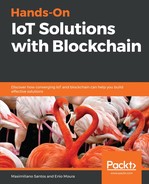Serverless computing is a model of deployment in which an application is deployed in an environment but is not necessarily running all the time. Its container is started when it is first executed and is kept alive while requests demand its execution. After a period of inactivity, the container for that application is quiesced. It is important to note that stopped containers will take time to get started, so real-time responsiveness is not a strength of a serverless application.
A serverless application (or, as many cloud service providers call it, a cloud function) is a microservice that is deployed and attached to a trigger, which is responsible for starting the container with the function and running it. A trigger might be a database change, a message delivered to a broker, an HTTP request, or another type of request.
Cloud providers usually charge the execution of cloud functions based on the duration of their execution and their resource allocation (usually memory). For example, a cloud function might take 500 milliseconds and use 256 MB of memory.
A successful cloud function is not computing-intensive and does not have a large number of requests (scheduled procedures). To facilitate the process of building and deploying serverless applications, the serverless framework is a good choice since it supports Google Cloud, AWS, IBM Cloud, and Microsoft Azure implementations of serverless computing.
